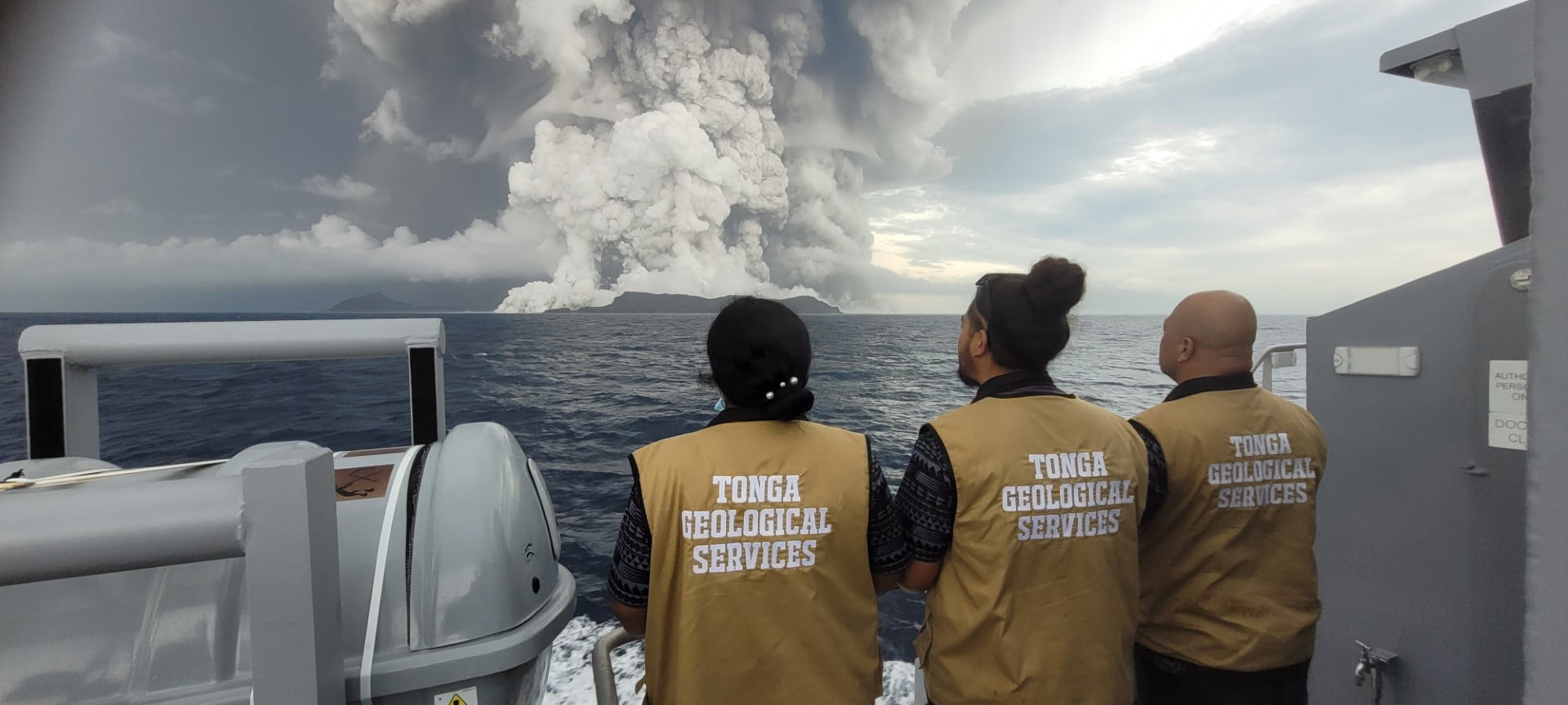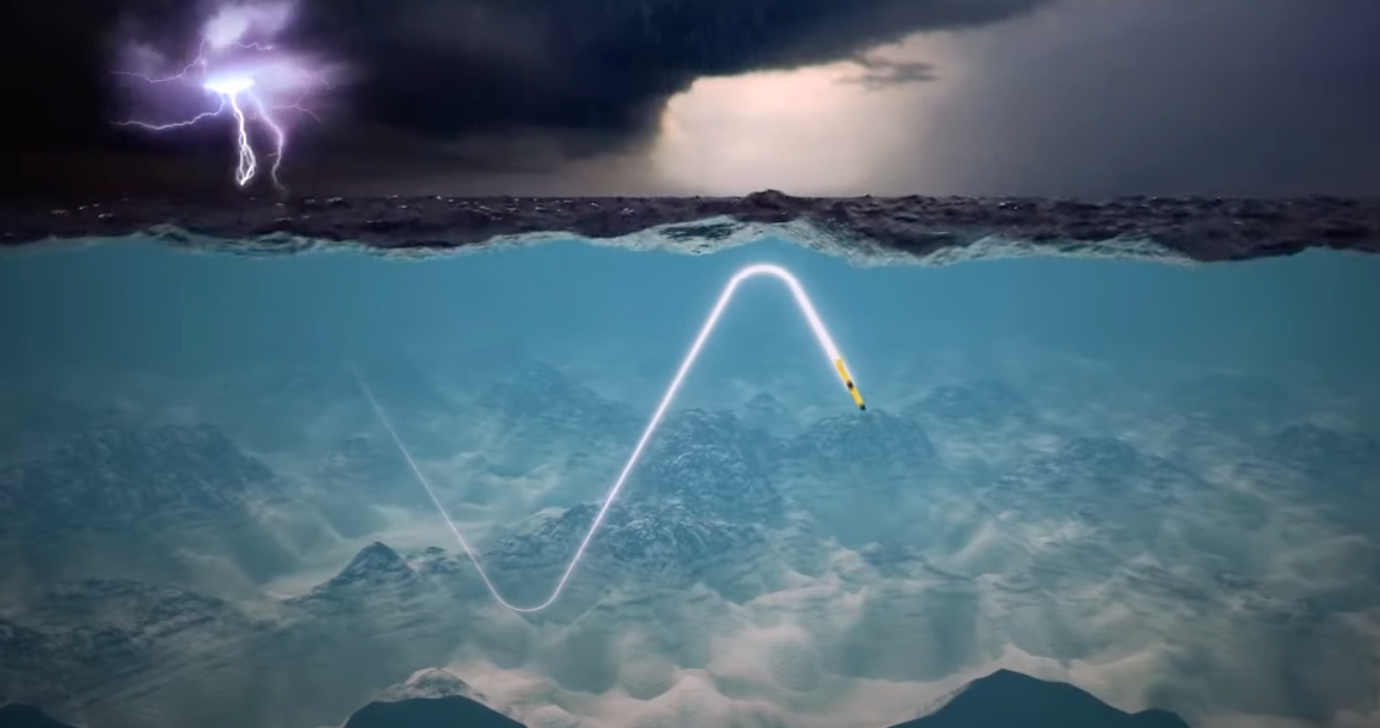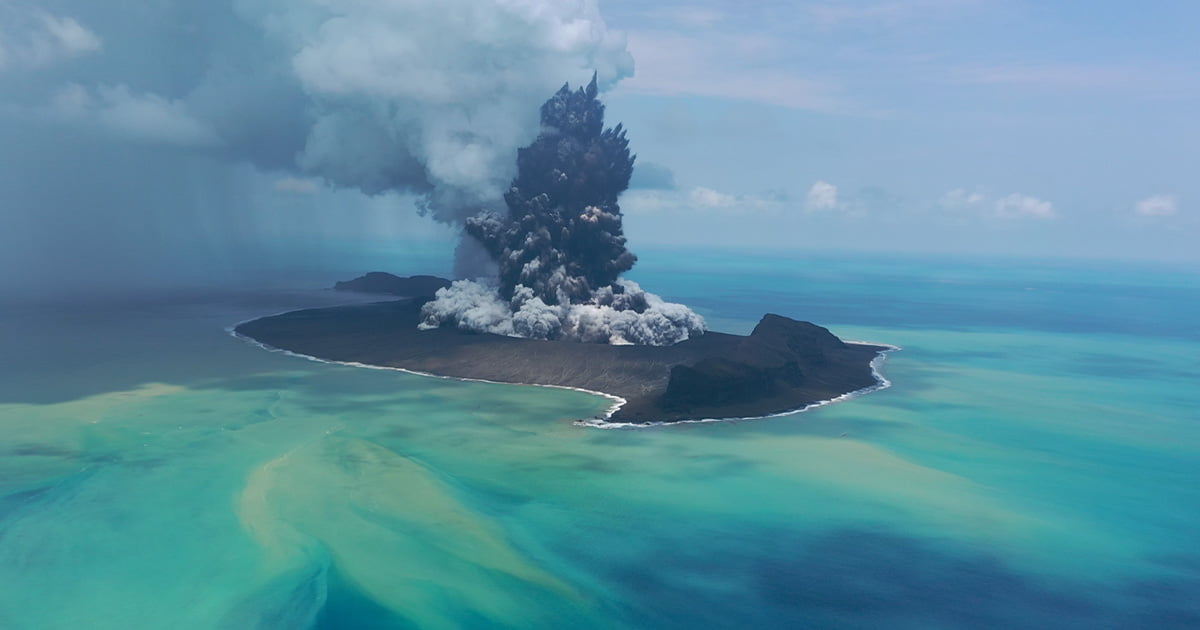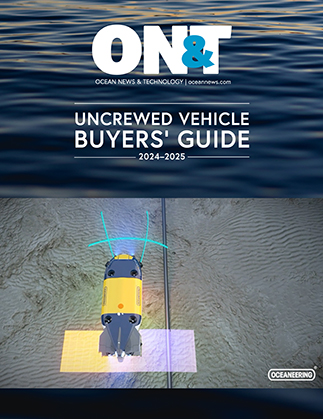The eruption of the submerged Hunga Volcano in January 2022 triggered fatal tsunamis and pressure waves that travelled around the planet; however, new research (published today in the journal Science) shows that major impacts were also felt far below the sea surface, when erupted volcanic material plunged straight into the ocean.
The sudden delivery of huge volumes of hot volcanic rocks, ash and gas into the ocean created avalanche-like flows, which travelled at speeds of up to 122km hr−1 along the seafloor, causing extensive damage to the two seafloor cables that connected the Kingdom of Tonga to the global telecommunications network and provide connectivity between islands.
Subsea cables underpin our daily lives, carrying more than 99% of all digital data traffic worldwide, including the internet. When Tonga’s only international cable was abruptly severed, the whole nation was disconnected from the rest of the world in the midst of a volcanic crisis.
Dr. Isobel Yeo, volcanologist at the National Oceanography Centre and joint-lead scientist on the paper, said: “A huge number of the world’s volcanoes lie under the ocean, yet only a handful of those are monitored. As a result, the risk posed to coastal communities and critical infrastructure remains poorly understood, and more monitoring is urgently needed.”
 The Hunga volcano eruption the day before the main explosions. (Image credit: Taaniela Kula, Tonga Geological Services)
The Hunga volcano eruption the day before the main explosions. (Image credit: Taaniela Kula, Tonga Geological Services)
The timings and locations of the cable damage allowed the researchers to determine the speeds of eruption-triggered seafloor flows for the first time and to better understand the hazards at other submerged volcanoes worldwide.
Scientists and industry collaborators rapidly responded to find out what caused this disruption. Seafloor sampling and surveys were collected by the research vessel RV Tangaroa, owned by New Zealand’s National Institute of Water and Atmospheric Research (NIWA). Just a few months after the eruption, scientists set sail to find out what caused the disruption, including key evidence showing that the cable damage was caused by powerful and dense currents.
 The Hunga volcano eruption from space. (Image credit: NASA)
The Hunga volcano eruption from space. (Image credit: NASA)
Dr. Mike Clare, also of NOC, added: “The extremely fast flow speeds were caused by collapses of the eruption plume, which was up to 57 km high. It then fell directly into the ocean onto very steep underwater slopes. Their initial speed was so fast, that these underwater flows were capable of running several hundred meters upslope and for at least one hundred kilometers across the seafloor. Their remarkable power explains the widespread damage to the seafloor cables.”
Semisi Panuve, CEO of Tonga Cable Ltd, an industry partner in the project, said: “The unique insight from this research is now being used by industry collaborators to improve the resilience of cable systems in other regions with active volcanoes. It’s important that we now understand what happened to our cables and why it was so difficult to locate them during the repair.”
Richard Wysoczanski, Principal Scientist for Marine Geology at NIWA and co-author of the paper, concluded: “Thanks to generous funding from the Nippon Foundation and incredible international collaboration, we now have this vital research that is relevant to anyone around the world who lives within proximity of underwater volcanoes, including countries around the Pacific Ring of Fire. We are armed with knowledge that will help keep communities informed and protected in the future.”
The paper was led by NOC authors in conjunction with scientists from NIWA and was part of a joint project funded by the Natural Environment Research Council in collaboration with 13 partners across an array of research and industry organizations from Tonga, New Zealand, Australia, Germany, USA, and the UK.

